-
Legacy Member

No. 5 Mk1. Oddities?
A quick introduction: I've been a member of the forum some time, and I posted a few times before life got in the way of fun. Did you miss me? At any rate, I'm happy to be
back and I plan to be more active.
I have a few questions about this No. 5 Mk1 that I would appreciate some help with. It is a BSA (M47C) rifle dated 1946 with serial number BJ4684. All serial-numbered parts (including stock and magazine) match. Using Stratton as the source, all other parts seem to be correct and some are marked with the BSA code. As you can see, it bears the "ENGLAND" stamp. I can find NO stamp that would indicate it has been through FTR.
My questions concern the rifle's condition. As you can see, the wood is in what I would call excellent condition. There are no scratches or other damage. Can someone tell me what type of wood it is? What does the condition of the wood indicate about the carbine's history?
The re-painted finish on the metal is also excellent with slight wear around the end of the flash eliminator. There are no other signs of wear. It has a few (four at most) chips in the paint in places where that's likely to happen.
As one of the pictures shows, the part of the barrel that's beneath the fore stock is not painted. Except for a few paint runs, it looks almost like the barrel was re-finished while in the stock. Is that possible? Is there any other explanation?
Upon close inspection, two "spots" of what I thought were paint on the unfinished part of the barrel are not, in fact, paint. As the picture below shows, they appear to be darker spots in the steel. They are completely smooth. They cannot be felt when rubbed with a finger or finger nail. Their shapes seem to be too similar to each other to be coincidental.
Does anyone know, or want to hazard a guess as to what the marks are?
Your help is greatly appreciated.
Mike

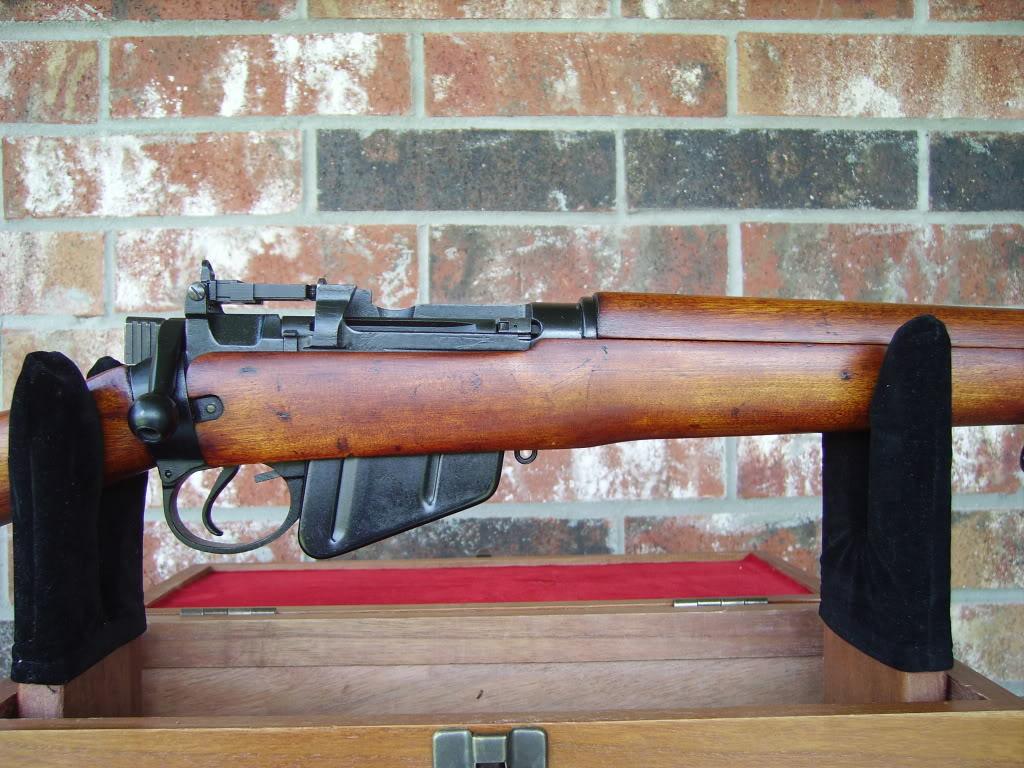
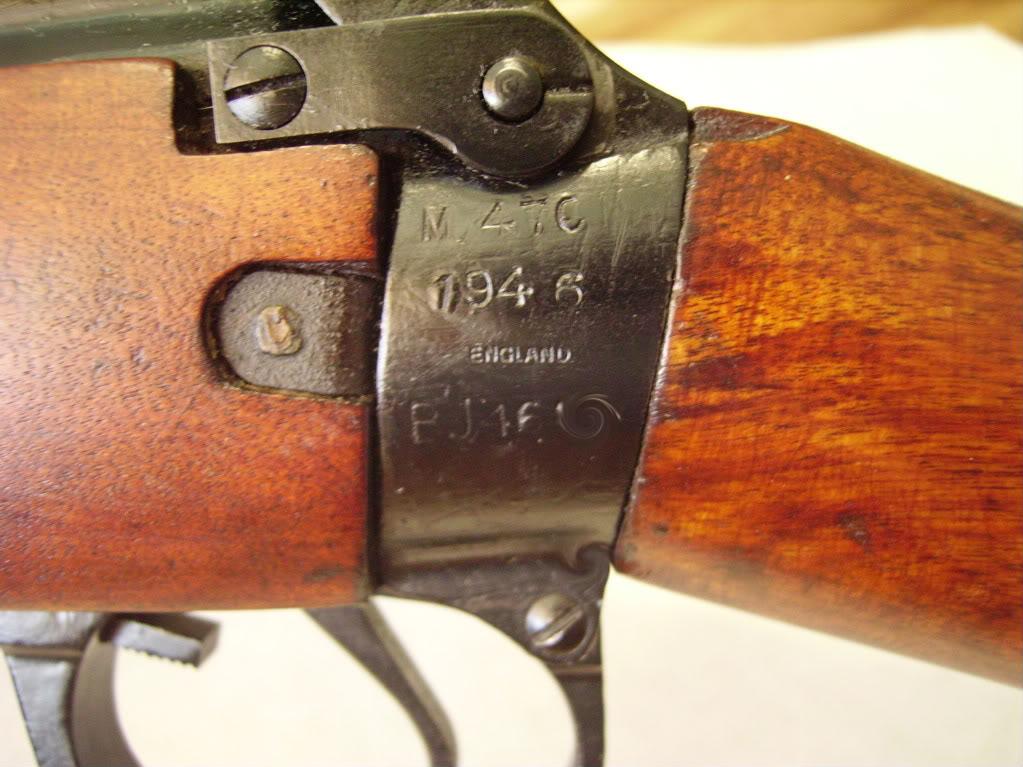
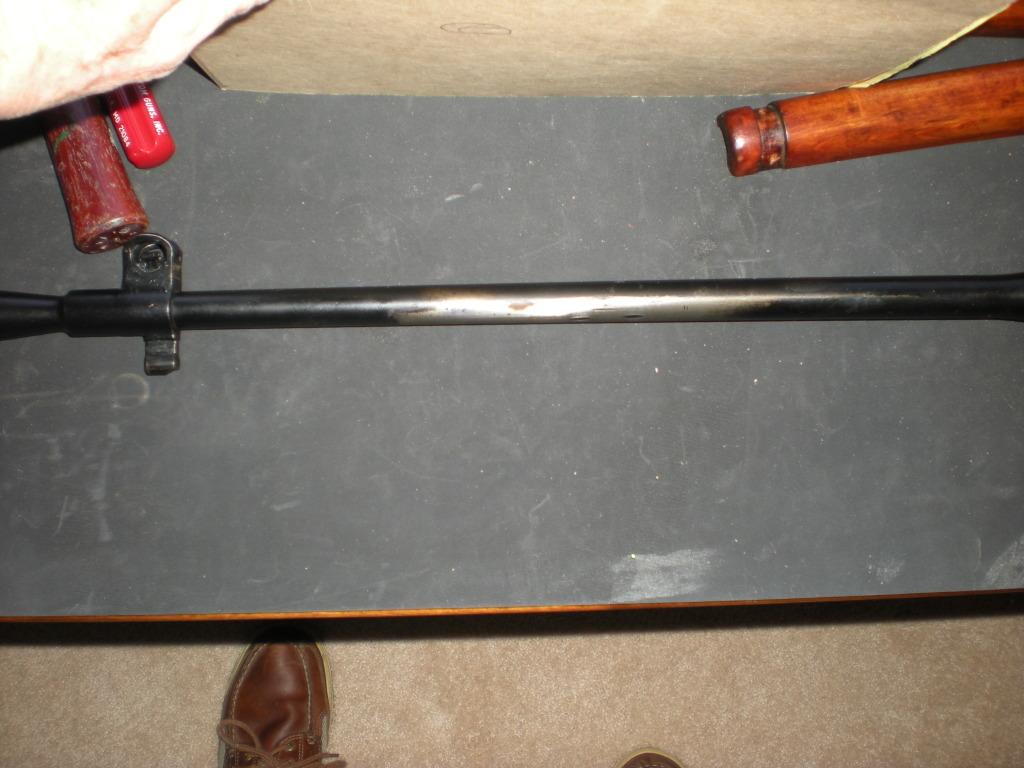
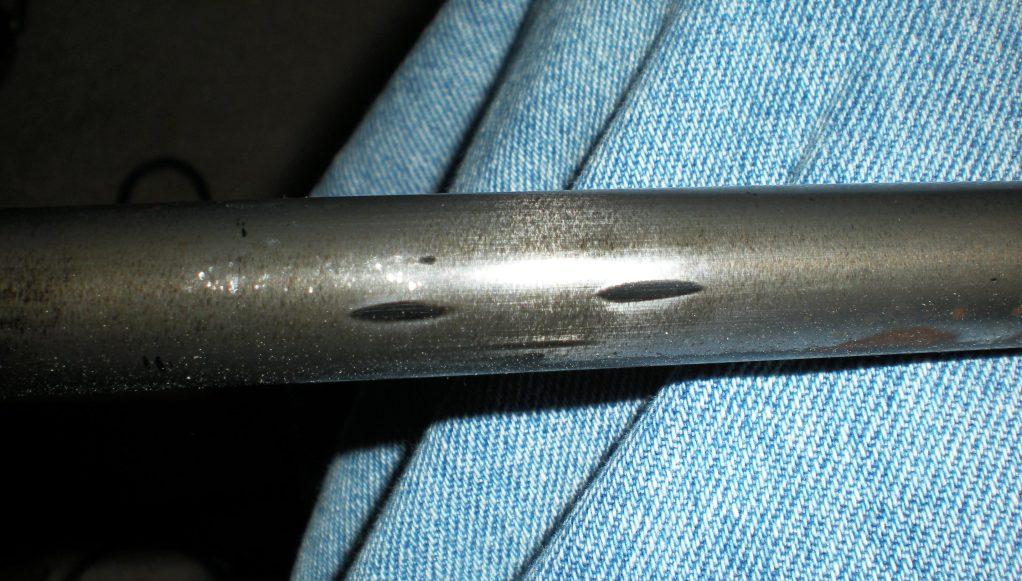
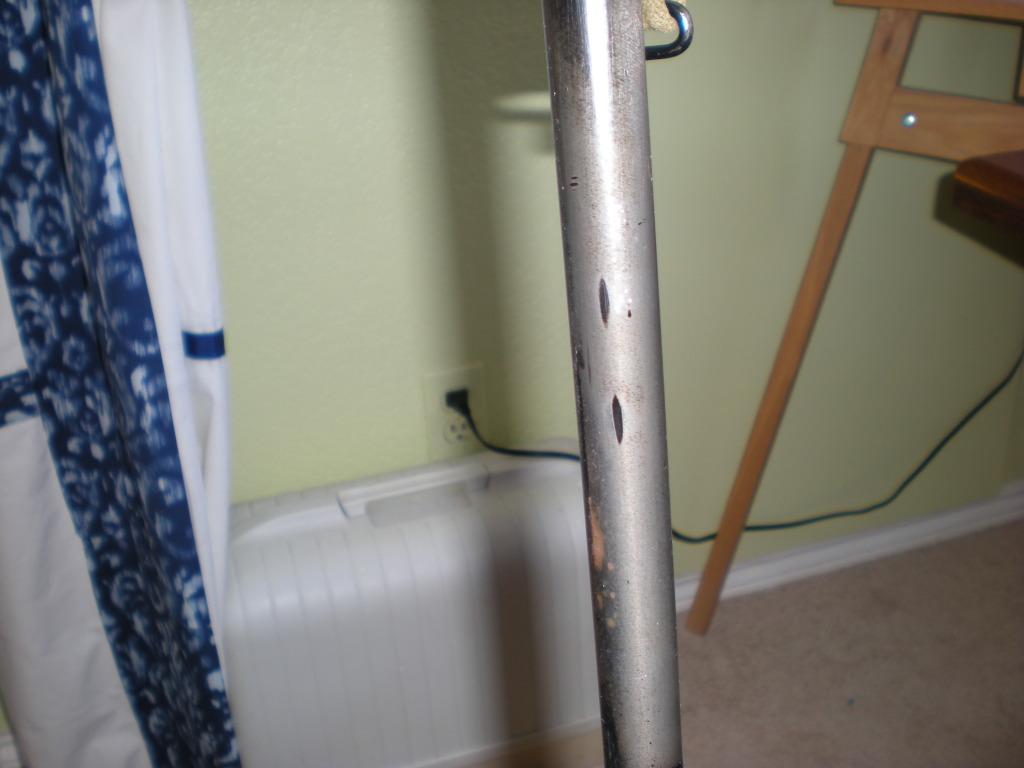
Information
 |
Warning: This is a relatively older thread
This discussion is older than 360 days. Some information contained in it may no longer be current. |
|
-
-
01-30-2012 12:14 PM
# ADS
Friends and Sponsors

-
Legacy Member

I have a earlier 1945 BSA No.5 with the exact same 'wear' on the barrel under the fore end. I took it to be poor finishing.
I can't help with the black spots but they are interesting indeed.
-
-
Legacy Member

Gav,
Thanks for your comment. It's interesting that you see it as "wear." That's the way mine looks too although I haven't described it that way. It looks to me as though a metal finish other than paint was there originally. I can't imagine what would create wear under the forestock. It clearly wasn't caused by contact with the wood.
Mike
-
-
Advisory Panel


I don't think its wear: normally the paint under the barrel inside the forend is in pristine condition. No5s tend to show paint wear around the barrel just in front of the woodwork. The rifle has been stripped/polished and repainted. Why they left an unpainted section under the barrel is a mystery.
-
-
Legacy Member

Thunderbox,
Looking at the bare metal with your input, you're right. It has been polished. That accounts for a little bit of worn-looking finish on the unpainted surface. A little more of the puzzle (aka my ignorance) solved!
Now, if someone could just solve the enigma of the two spots ...
Thanks,
Mike
-
-
Legacy Member

I have seen lots of these marks on a lot of Enfield barrels! My thought is possibly marks made by a barrel straightener! I do have a picture somewhere of this being done by BSA, Will go find!
-
-
Legacy Member

XL39F1,
I guess it's reassuring to know that my barrel isn't the only one! I'll be looking forward to seeing the picture. Thanks for going to the trouble.
Mike
-
-
Legacy Member

Extract from "Machining The Lee Enfield Barrel - Operations and Fixtures Employed" dated May 25th 1916
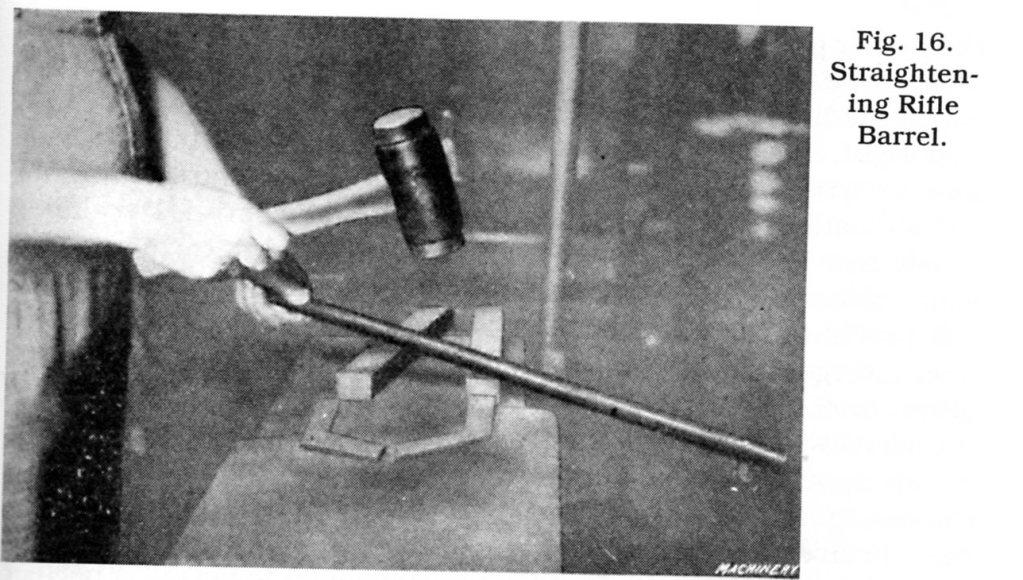
"The straightening block shown in Fig 16 consists of a heavy base on which are fastened two narrow steel dies which converge on the left side of the operator. These dies are about 1/2" in width and of hardened steel, in order to withstand the severe service to which they are put. The object of locating them in this Vee form is in order that the spot on the barrel where the crook is indicated by the shadows may be placed that it will come right on the dies .............................
............... the hammers used in straightening average about 5-1/2 lbs in weight and are of a mallet shape.............."
There is loads more - this is just a precis.
Mine are not the best, but they are not too bad. I can think of lots of Enfields I'd rather have but instead of constantly striving for more, sometimes it's good to be satisfied with what one has...
-
The Following 3 Members Say Thank You to Alan de Enfield For This Useful Post:
-
Advisory Panel


I'm not sure if this was originally referenced as Enfield or BSA.
Same equipment; slightly longer hammers! The barrels seem to be No1 tubes in the white...?
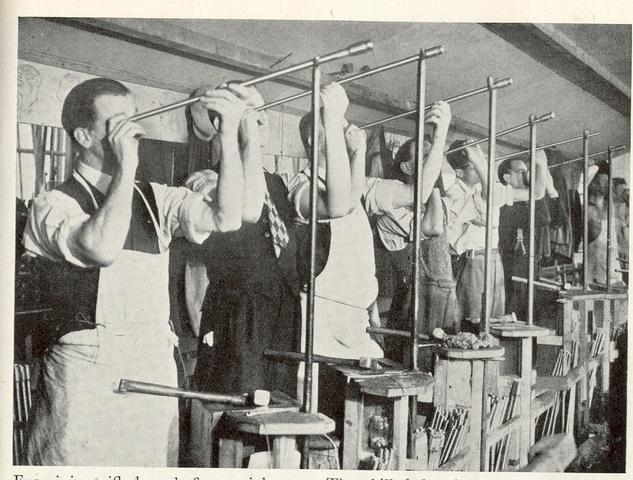
-
-
Advisory Panel


Trouble is, you can see that any marks produced by the illustrated barrel-straightening would be perpendicular to the bore, not aligned with it.
The marks must have either come from a different type of jig, or from a different process altogether.
This is another "worn" No5 barrel I happen to have to hand. This one has distinct longitudinal banding or striations visible, also only evident in the remains of the Suncorite and not detectable to the touch. This is a "D in a circle" draw-lapped barrel, so maybe these are all types of clamping marks from barrel operations.
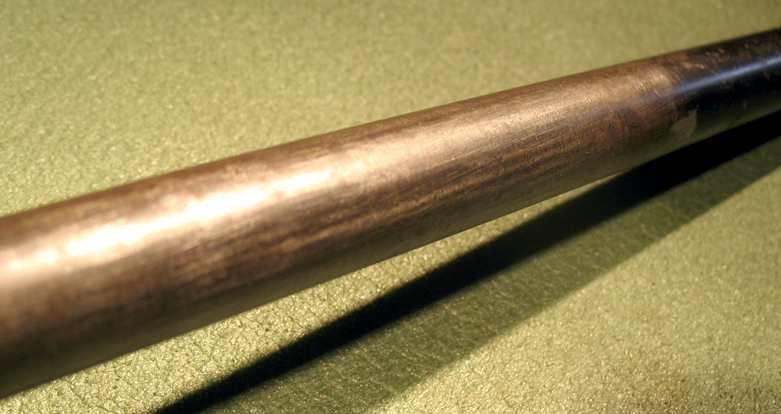
-
 Information
Information



















 PM
PM











